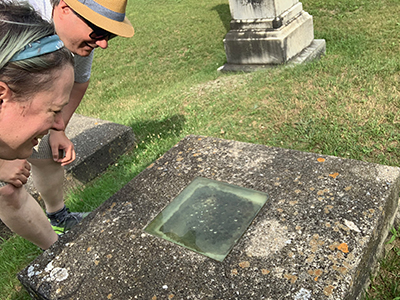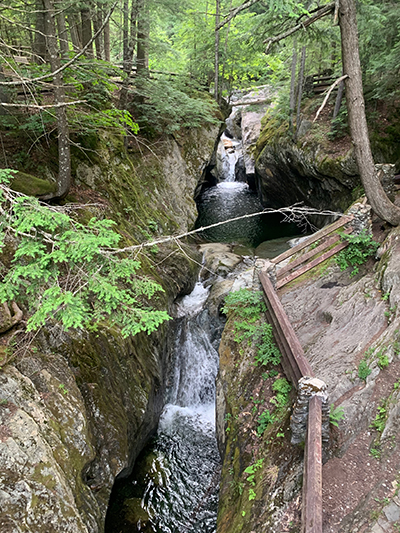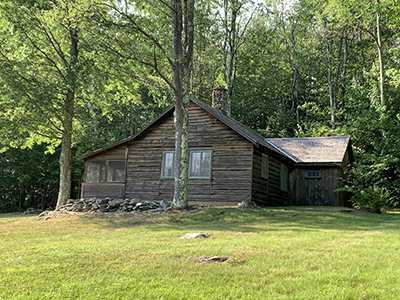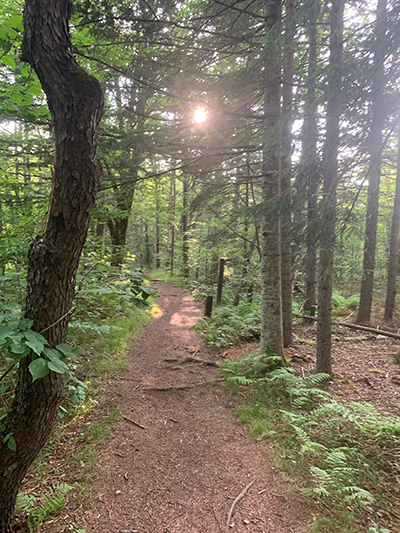Following Atlas Obscura to Family Adventure—Middlebury
By Kim J. Gifford
Middlebury Area
We managed to hit all four Middlebury locations in a single day trip, although much longer could be spent at Texas Falls if you wanted to hike there or pack a picnic lunch. We chose instead to stop by a local market in New Haven, grab a couple of subs and eat them on the store’s porch before venturing on to our other locations.
Grave of Anum-Her-Khepesh-Ef,
Middlebury
Want to feel like an archeologist? Then trying to locate the grave of Anum-Her-Khepesh-Ef, a 4,000-year-old mummy prince, in the West Cemetery in Middlebury, Vt. may be your thing. Atlas Obscura explains that the grave is located about halfway up the cemetery on the left, but it still took us a while to find it, perhaps because we were not expecting it would be the one bearing a small yellow matchbox car atop the stone. Yet, perhaps such a gift, left by another visitor, seemed fitting for a child. The two-and-a half-year old Egyptian prince managed to end up being buried in a Middlebury grave far away from his home and long after his birth because a collector, Henry Sheldon, had him shipped to the United States to be part of his collection. Because the mummy arrived in poor condition, he was never displayed and remained in Sheldon’s attic until he was later discovered by George Mead after Sheldon’s death. Mead had the mummy cremated and buried in his own family plot. The stone features engravings of a cross, an Egyptian ankh, and a bird. The inscription, which is difficult to make out reads “Ashes of Amum-Her-Khepesh-Ef Aged Two Years Son of Sen Woset 3rd King of Egypt and His Wife Hator-Hotpe 1883 BC.
We spent a lot of time here, looking at other old graves and their inscriptions, but always coming back to the mummy’s and the lingering melancholy feeling of this poor prince being buried in a foreign way, in a foreign land, so far from his family and home.
Grave of Timothy Clark Smith
New Haven
Almost as unique as a mummy in a Middlebury cemetery was the grave of Timothy Clark Smith in New Haven. Smith was a nineteenth century doctor who feared being buried alive and did everything he could to ensure that such a fate did not await him. He had his tomb built with a window as well as a set of stairs underneath a large square capstone beside his burial mound. Legend has it he also was buried with a bell in his hand and a breathing tube. Supposedly visitors could once look through the window and see down six feet blow to the doctor’s face, but moisture and aging has made it impossible to see much through the glass today, although my brother and I certainly tried, sticking our face as close as we could to the window.
Robert Frost Interpretative Trail
Ripton
By far the most tranquil place we visited, the Robert Frost Interpretative Trail consists of an easy walk of 1.2 miles. The trail weaves through stands of birches, wild blueberry fields, and stretches of beautiful woodland. Every so often, we would stop to read one of Frost’s half-dozen or so poems posted along the trail. Set against the backdrop of this beautiful Vermont landscape, the words took on a greater meaning as we viewed the very natural world that inspired their creation.
Texas Falls
Hancock
My biggest disappointment with Texas Falls was no matter how much research I did, I could not discover the origin of the name. We guessed that the falls, formed by glaciers 12,000 year ago, were seemingly as big as the state of Texas, but that was only our guess. The Texas Falls Nature Trail is approximately a mile long, but rather than hike it, we simply stayed on the bridge overlooking the falls and watched the water as the air chilled and the sun set on our day.




